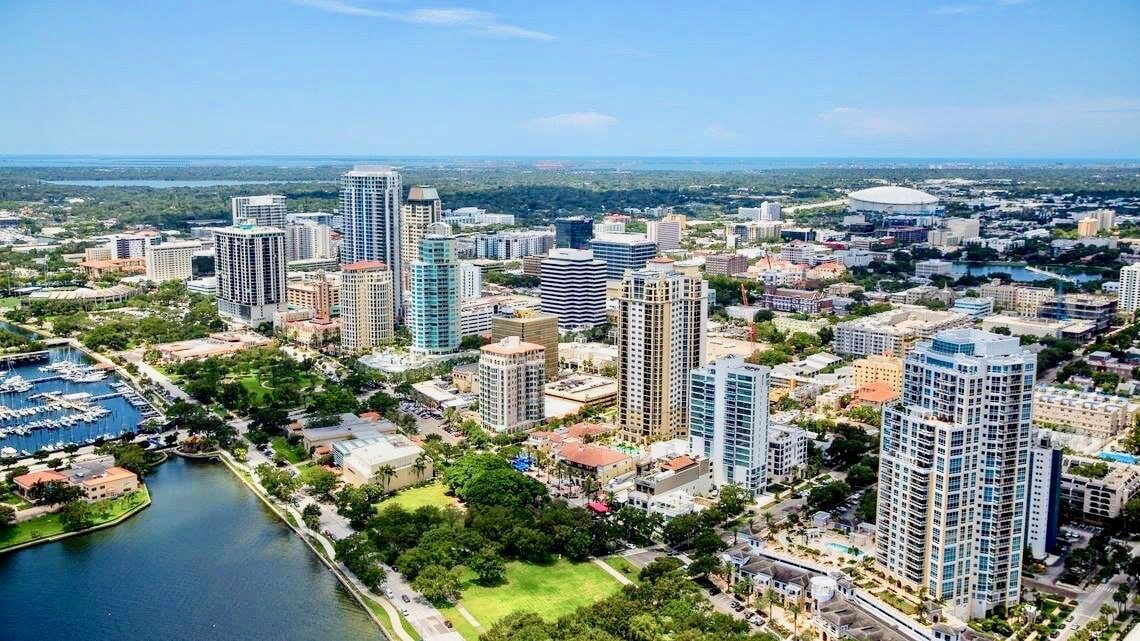Historically St. Pete: The legacy of St. Pete’s first Black hospital
/Nurses at Mercy Hospital in St. Petersburg in 1960 | St Petersburg Museum of History
At St. Pete Rising, we are constantly providing comprehensive coverage on everything new and coming soon to the Sunshine City, but we think it’s also important to take a look back at our city's rich history.
Historically St. Pete, a monthly column on St. Pete Rising written by Executive Director of the St. Petersburg Museum of History Rui Farias, covers everything from the legend of underground mobster tunnels to the buildings and people that created the Sunshine City.
Follow us each month as we explore how these projects shaped St. Pete into the city we know and love today.
This month we explore the remarkable history of Mercy Hospital — the only primary care facility for the African American community of St. Petersburg from 1923 to 1966.
The pediatric ward at Mercy Hospital in 1946 | St. Petersburg Museum of History
Throughout the era of Jim Crow in St. Petersburg, African Americans faced legal segregation at every turn. From hotels and restaurants to our famed beaches and tourist venues, it was made clear that unless you were working construction, carrying luggage in a hotel, or cooking in any of the various downtown cafeterias, Black residents were not welcome near downtown St. Pete.
This was also true for medical care.
Whether it was Jim Crow laws, or generational tradition, most white hospitals did not admit Black patients, no matter how sick or injured.
In 1910, a five-room bungalow home was remodeled into the city’s first hospital. Good Samaritan opened on the outskirts of Roser Park on 6th Avenue and 7th Street South for the white residents of St. Pete.
As the city grew, a bigger medical facility was needed. A new hospital, Augusta Memorial Hospital, was planned for a site adjacent to Good Samaritan.
Dr. James Maxie Ponder, the city’s first official Black doctor | St Petersburg Museum of History
In 1913 local developer Charles M. Roser helped move Good Samaritan to 4th Avenue South and 12th Street. Keeping its name, it opened as the city’s first African American hospital.
Conditions were dismal at Good Samaritan, especially compared to the all-white Augusta Memorial, and later Mound Park Hospital.
Finally in 1923, city leaders agreed to build a hospital for Black residents on 22nd Street South between 13th Avenue and 14th Avenue South on land once owned by African American pioneer developer Elder Jordan, Sr.
Architect Henry Taylor of The Vinoy Park Hotel, St. Mary Our Lady of Grace Church, and Jungle Country Club Hotel fame, was hired to design Mercy Hospital.
When Mercy Hospital opened it was originally run by nurses. It wasn’t until 1926 that Dr. James Maxie Ponder, the city’s first official Black doctor, was hired to oversee Mercy.
In 2003, the Dr. Johnnie Ruth Clarke Medical Center was built alongside and connected to the historic Mercy Hospital | St. Petersburg Museum of History
Years later, the question remains unanswered whether the city invested the money as a civic gesture of goodwill, or to create an opportunity to move Black residents further from the ever-expanding downtown area.
Dr. Ponder was run ragged as Mercy’s lone physician. He managed everything from medical crises to day-to-day tasks to delivering babies. A few white doctors did help. Dr. William Dicks opened an office near the Manhattan Casino to see patients, as did Dr. William B. Lingo.
Eventually the Mercy staff grew but was always vastly understaffed.
In the 1940s a group of doctors approached City Hall about improving the care at Mercy Hospital. City Council moved this up the spending priority and a 15,000 square foot addition was built in 1948 for $212,742.
In 1960, Mound Park again refused to integrate. African American doctors at Mercy were tired of the segregation laws – especially the separate, but un-equal treatment when it came to supplies, equipment, and medicine – and threatened to boycott Mercy Hospital.
Mound Park administration and white doctors voted to finally integrate their hospital in 1961.
Johnnie Ruth Clark Health Center at the Historic Mercy Hospital Campus | City of St. Pete
Mercy Hospital was again renovated in 1962, increasing the number of beds to 87, but funding still fell short of the traditionally white hospitals in the city. Mercy shut its doors in 1966.
The building changed hands a few times, housing Head Start and Goodwill Industries. In 1994, the City of St. Pete declared the original building a historic landmark, and in 1997 the City bought it back.
In 2003, the Dr. Johnnie Ruth Clarke Medical Center, named in honor of the first African American woman to obtain her PhD from the University of Florida’s College of Education, was built alongside and connected to the historic Mercy Hospital.
Clarke was a Civil Rights activist and a pioneer in the fight against sickle cell anemia. Her activism also established modern medical services for the underserved African American residents of St. Petersburg.
The Center now houses Evara Health, formerly Community Health Centers of Pinellas, which carries on the vision of Dr. Johnnie Ruth Clarke.
Today, the Center continues its mission of providing high-quality medical care for all.




















































